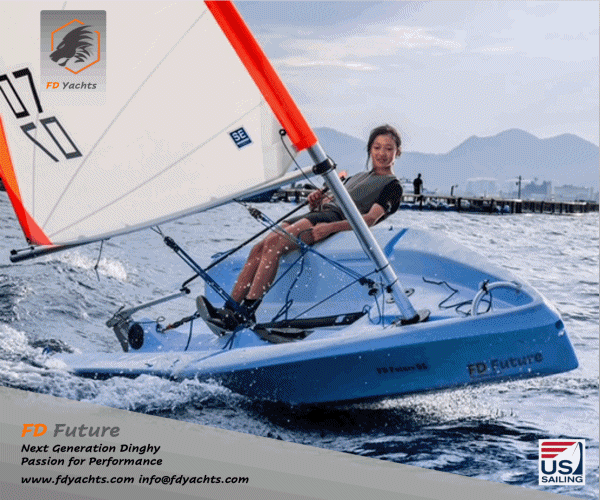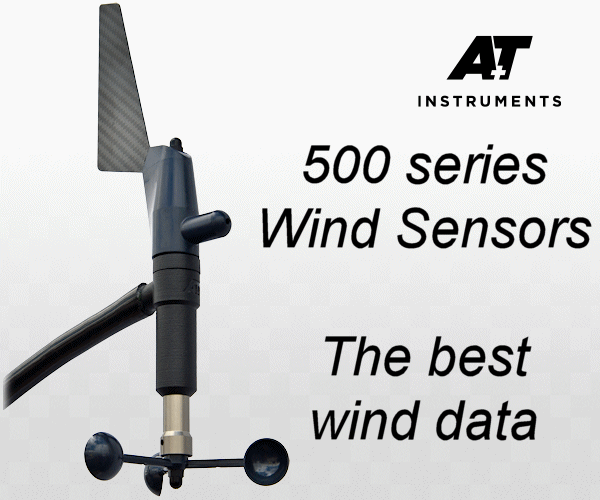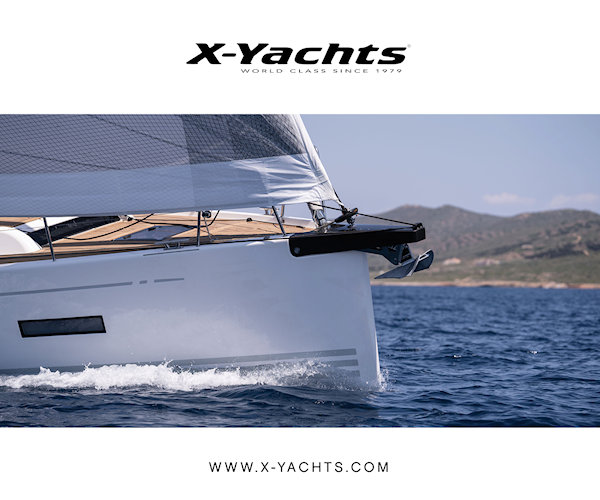Visual signals for race management |
Post Reply 
|
Page 12> |
| Author | |
Helmsman 
Newbie 
Joined: 14 Sep 06 Location: United Kingdom Online Status: Offline Posts: 11 |
 Post Options Post Options
 Quote Quote  Reply Reply
 Topic: Visual signals for race management Topic: Visual signals for race managementPosted: 22 Jun 09 at 10:07am |
|
Signal lamps are often used to display visual signals for race management, especially for shore based starting lines, because they are easy to automate and highly visible. There are several different codes available, the best known being Morse code which can emulate flags and therefore provide a high degree of compatibility with the Racing Rules of Sailing using only one or two lamps. At the other extreme is a two dimensional array of light emitting diodes which can display pictures of flags, numerals or letters but is large, power hungry, only visible from one side and very expensive. Most computer assisted race management systems use signals based on traffic lights which are helpful if the sound signals are inaudible but have a very limited repertoire. What are your views on the way ahead?
|
|
|
Mad Scientist
|
|
 |
|
ColPrice2002 
Far too distracted from work 
Joined: 25 Nov 08 Location: United Kingdom Online Status: Offline Posts: 222 |
 Post Options Post Options
 Quote Quote  Reply Reply
 Posted: 23 Jun 09 at 12:50pm Posted: 23 Jun 09 at 12:50pm |
|
I don't see how you can emulate a flag signal for starting a race with a morse code light. At my Sailing Club, we have several classes all starting at 3 minute intervals - the flags differentiate which class is starting - so you will need to emulate :- Class 1 warning flag; Preparatory signal; class 2 warning (could replace class 1 Warning - but the visual signal would be confusing) plus recall flag (if necessary); code flag "L" - change of course plus "Shorten course" with (or without) class flags. IIRC many years ago the IYRU proposed a set of coloured balls for the warning and preparatory signals (being visible until 30 seconds before the next signal) but this never seemed to be used widely - largely - I suspect - because it could not manage several sequential starts easily. Also, consider that a flag is visible and readable with just a quick glance - to read a morse code letter, a person's attention has to be concentrated to the lamp for at least 2 cycles of code groups to be sure that the signal is read correctly. Last point - many dinghy classes have their own warning flag (e.g. Laser),, a number pendant or one of the Naval Numeral Flags (e.g. Osprey - Naval code flag "0" zero). the most practical way forward (IMO) is for the development of a timer for starting sequences that gives the correct intervals (programmable for diffent sequences) different numbers of classes, creates the sound signals at the correct time, then displays the elapsed time for the OOD to cope with lap-timed handicaps. Oh yes - it should be portable and waterproof so it can be taken on the committee boat (e.g. 12 foot dory) |
|
 |
|
Lukepiewalker 
Really should get out more 

Joined: 24 May 06 Location: United Kingdom Online Status: Offline Posts: 1341 |
 Post Options Post Options
 Quote Quote  Reply Reply
 Posted: 23 Jun 09 at 4:03pm Posted: 23 Jun 09 at 4:03pm |
|
If you're that desperate could you not motorise the flags?
|
|
|
Ex-Finn GBR533 "Pie Hard"
Ex-National 12 3253 "Seawitch" Ex-National 12 2961 "Curved Air" Ex-Mirror 59096 "Voodoo Chile" |
|
 |
|
jeremy lees 
Newbie 
Joined: 23 Jun 09 Location: United Kingdom Online Status: Offline Posts: 4 |
 Post Options Post Options
 Quote Quote  Reply Reply
 Posted: 23 Jun 09 at 4:22pm Posted: 23 Jun 09 at 4:22pm |
|
At Starcross YC, we have been successfully using an
automated starting system for several years now. We too use a 3 minute sequence which lends itself very nicely to the automation of multiple starts. All the OOD has to do is start the sequence with a large green button at 6 minutes before the first start time and the system does the rest. Each start has its own, coloured light arranged vertically on the flagpole. We use five lights but there would be no problem having more, apart from running out of colours... At 6 minutes before the first start, there is a sound signal and the top light starts to flash. At 3 minutes, there is a sound signal, the top light goes on solid and the next one down starts to flash. At 0 minutes, there is a sound signal, the top light goes out, the second one goes solid and the 3rd one starts to flash. This carries on till the last fleet starts with the last light going out. This might sound complicated but is actually pretty simple and anyone should be able to tell from looking at the lights exactly where they are in the sequence and set their watch accordingly at the next sound signal. Each light has its own coloured and lit button lined across the top of the control box (which actually light and flash along with the lights), in addition to the green button to start the sequence, there is a large red button to manually sound the horn and there also two additional red and amber buttons which light red and amber flashing beacons. Using these manual controls, we can signal and control individual recalls, general recalls, race postponement, race abandonment, shorten course etc and we can also shorten course for individual fleets. The control system is based around a programmable logic controller, which activates relays for the lights and horn and is the sort of thing used to run industrial processes in factories. It is reckoned to be much more reliable than any pc and is capable of far more than we are using it for. There is also a display which shows clocks for each start. However, we no longer really use these, as we now have a computerised race management system for running the race once it has started. This enables the OOD to click on each boat on a list, colour-coded for fleets, in order to time them on each lap. The computer knows how many laps each fleet is doing, so also finishes the boats onto a results list. It also know the PYs, so times are automatically corrected instantly. The OOD then just clicks on a button to export them to our website and also print them off to display in the clubhouse. The race management system is still being tweaked for absolute perfection but is absolutely brilliant. The starting system was originally intended to run alongside flags for at least a month or so, while it was evaluated. This never happened... The flags have not been used since the system was first tested. We had a few teething problems at first with over-heating trip-outs happening but once we installed the system in a decent sized box and uprated the relays and trips, the system has been totally reliable. The lights are PAR 38 self-coloured reflector-type bulbs and are arranged in pairs to give a wider spread of visiblity and allow for occasional bulb failure. I expected the bulbs to fail quite frequently due to the flashing and being out in the weather but that hasn't been the case and many are original, so 5-6 years old. Incidentally, we do use some lights to start more than one class; eg the final start is for multi-hulls where Darts and Hurricanes start together but do not race against each other. At about the same time as us, Whitstable SC came up with a similar system - they had a different means of controlling the sequence but the lights sequence we both arrived at quite independently, is pretty much identical. Penzance SC have been using an automatic horns and lights sequence since the 70s... Jeremy Lees Commodore Starcross Yacht Club Edited by jeremy lees |
|
 |
|
Helmsman 
Newbie 
Joined: 14 Sep 06 Location: United Kingdom Online Status: Offline Posts: 11 |
 Post Options Post Options
 Quote Quote  Reply Reply
 Posted: 23 Jun 09 at 10:32pm Posted: 23 Jun 09 at 10:32pm |
|
I have to disagree with ColPrice2002 regarding the use of Morse code for starting races. I have used it successfully for several years for cruiser and fast dinghy handicap races. The time at which each signal is displayed is accurate to the nearest 0.1 second, and the time at which the signal is removed is accurate to the nearest 0.6 second, that being the interval between single characters. People synchronise their watches when the signal is displayed rather than when it is removed, so there is no problem with judging when to start. It is seldom necessary to decode a complete character, one or two pulses often being sufficient to resolve any doubts. There are some flags for which there is no standard Morse equivalent but special codes can easily be devised. The system only needs one lamp cluster if a preparatory signal is not required and the races start at 10 minute intervals, but two clusters would be required if starting at 5 minute or three minute intervals, each cluster being used for alternate races. My system only requires the race officer to click a function key to initiate the sound and the visual signals, with automatic signal removal at the appropriate time and automatic rescheduling of races when there is a postponement or general recall. Races can be shortened, postponed to another day or abandoned either collectively or selectively by appending the warning signal of the selected race. Finish times are recorded and the horn is sounded whenever a boat finishes, and each finish time is allocated to a boat whenever there is a lull, making it possible to deal with finishes in quick succession. Each boat in the list of starters can be found by typing the first few digits of the sail number or the letters forming the name of the boat into an edit box or by using the mouse. The starters in individual races or all races can be displayed, with the class, boat name, colour, helmsman and crew of each boat included in the list to aid recognition. It is clear that there are several viable approaches to race management, each with their own merits so there is plenty of scope for good ideas. Although my system works very well and is much appreciated by those who have used it there are those on our sailing committee who still insist on using manually operated flags instead of lamps for all club races so the system has now been discontinued. |
|
|
Mad Scientist
|
|
 |
|
ColPrice2002 
Far too distracted from work 
Joined: 25 Nov 08 Location: United Kingdom Online Status: Offline Posts: 222 |
 Post Options Post Options
 Quote Quote  Reply Reply
 Posted: 24 Jun 09 at 11:10am Posted: 24 Jun 09 at 11:10am |
Your original post didn't make it clear that this system had been user tested - so I applied the usual thoughts of "how do I imagine your system could work" and started there. I still have a serious problem with your timing - using the first flash of the lamp. It means that someone has to be observing the lamp all the time until it is illuminated, then decode the pulse. If it's only 0.6 seconds long, then that means one of the crew has to be looking at that all the time - rather than on collision avoidance, best starting postion etc. Difficult in a single hander. From both descriptions (Starcross and yours), it appears that the system needs significant amounts of power (both in electrical form and Computer processing). The club I sail with has a lake, and the start line is fixed from a committee boat - any power available is the 12 v battery for the outboard. This gives the ability to set a start-line across the wind, but does mean that any system used is exposed to wind, rain, snow etc and has to be totally weatherproof. The other problem I see is that any visiting sailor will have to re-learn the local starting controls and sound signals. The system must be described in the Sailing Instructions. I've seen the early attempts to automate flags - back in the 70's - and I've always considered anything that can help the OOD manage the race as an advantage - so please don't think that I'm saying a system like yours is unworkable - obviously it is - what it needs is to be more widespread to be accepted. That may mean a commercial product that could be widely used.
Colin |
|
 |
|
Helmsman 
Newbie 
Joined: 14 Sep 06 Location: United Kingdom Online Status: Offline Posts: 11 |
 Post Options Post Options
 Quote Quote  Reply Reply
 Posted: 24 Jun 09 at 10:52pm Posted: 24 Jun 09 at 10:52pm |
|
Colin, The only way to see the beginning of the display of the visual signal is by looking towards the signal station for a few seconds beforehand. This applies whether the lamp is transmitting Morse code or not, and applies just as much to flags. If you miss the moment the signal is first displayed you can use the sound signal, making an allowance of about one second for the delay due to the speed of sound, and then watch for the display of the preparatory signal to get a more accurate time check. Although the use of Morse code does not affect the time check in any way, you may be interested to know that I use a dot duration of 0.2 seconds and a dash duration of 0.6 seconds. The interval between pulses is 0.2 seconds and the interval between letters or numerals is 0.6 seconds. Each letter or numeral has a duration of between 0.8 to 4 seconds and is repeated many times so there are plenty of opportunities to decode the signal if desired. Higher transmission speed is possible but at the expense of readability. I have designed the system to conform as closely as possible to the Racing Rules of Sailing, but appreciate that special starting sequences may be better for starting at 3 minute intervals and there are alternative methods of encoding the signals by using several clusters of lamps. Whatever signals are used it is important to include their description in the sailing instructions. My system is intended for use in a starting box on shore where the computer is protected from the weather and power is readily available. A battery operated system using a microcontroller has been developed by a member of Whitstable Yacht Club for use on a committee boat. The visual signals use clusters of fog lamps which are colour coded using transparent lacquer and can log finish times for later analysis on a computer ashore. Unfortunately I have heard recently that it is out of action and the designer has died. My own system has been discontinued this year because our sailing committee insists on using flags because they are the only signals described in the Racing Rules of Sailing. |
|
|
Mad Scientist
|
|
 |
|
Medway Maniac 
Really should get out more 
Joined: 13 May 05 Location: United Kingdom Online Status: Offline Posts: 2788 |
 Post Options Post Options
 Quote Quote  Reply Reply
 Posted: 30 Jun 09 at 11:42am Posted: 30 Jun 09 at 11:42am |
Helmsman's system has much to recommend it, but you've hit on precisely the reason I didn't like using it. Sounds to me, however, that adopting the Starcross coloured lamps is the way forward, Helmsman. You should know by now that your club-mates are never going to accept morse, whether you're right or not |
|
 |
|
jeremy lees 
Newbie 
Joined: 23 Jun 09 Location: United Kingdom Online Status: Offline Posts: 4 |
 Post Options Post Options
 Quote Quote  Reply Reply
 Posted: 30 Jun 09 at 1:03pm Posted: 30 Jun 09 at 1:03pm |
|
The difficult parts of our system, ie the electronics and the programming were carried out by a local company on a commercial basis, so could be ordered virtually 'off the shelf' but on a custom basis to suit the indidvidual needs of a particular club. I'm not sure how you could accomodate a 5,4,1,0 system with lights though, 3 minute intervals are relatively simple, so would be cheap (ish) in programming time as it has already been done. We built the light array ourselves and it was just a simple diy job with the lights being mounted on a length of rectangular-section boom which was in turn mounted on the flag-pole. The electronics work off 12 volts via a transformer, as does the horn which is a car air-horn but the relays control 240 volt lights because they are cheap, reliable and we have a 240 volt supply available in our race-box. However, there is no reason why the whole system shouldn't run at 12 volts and the lights could be leds, which consume very little current. Even then, I don't think I'd want to try and run it off the outboard motor battery of a Dory. The box the electronics are mounted in is water resistant though, so I'm sure it could be adapted for use on a committee boat. However, we run our racing all year round and our ROs do like to be warm and dry in the comfort of our race-box. |
|
 |
|
ColPrice2002 
Far too distracted from work 
Joined: 25 Nov 08 Location: United Kingdom Online Status: Offline Posts: 222 |
 Post Options Post Options
 Quote Quote  Reply Reply
 Posted: 30 Jun 09 at 1:43pm Posted: 30 Jun 09 at 1:43pm |
My current club has the option of a dory - moored on the lake to give a good start line (with a roof) - or a fixed start line from the outside balcony (not a good start line for anything!). And we race all year round (except when the lake was frozen) - what the Race officer hasn't had - he doesn't miss!
Colin |
|
 |
|
Post Reply 
|
Page 12> |
| Forum Jump | Forum Permissions  You cannot post new topics in this forum You cannot reply to topics in this forum You cannot delete your posts in this forum You cannot edit your posts in this forum You cannot create polls in this forum You cannot vote in polls in this forum |
Copyright ©2001-2010 Web Wiz
Change your personal settings, or read our privacy policy















-(1)-202408140552.gif)









 Printable Version
Printable Version Delicious
Delicious Digg
Digg Facebook
Facebook Furl
Furl Google
Google MySpace
MySpace Newsvine
Newsvine reddit
reddit StumbleUpon
StumbleUpon Twitter
Twitter Windows Live
Windows Live Yahoo Bookmarks
Yahoo Bookmarks Topic Options
Topic Options